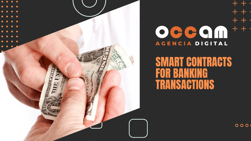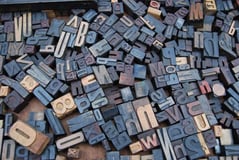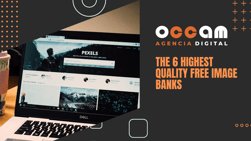Index Content
A banner is an advertising graphic element placed on a website whose main objective is to generate interactions with visitors. In the Inbound strategy, banners have the important function of attracting visits and generating conversions. That is why, in many cases, they are considered the port of entry for the lead.

what types of banners are there?
-Integrated banner: This banner is frequently used and is characterised by having a fixed position on the website where it is integrated. It is not very intrusive because its size and location do not vary. Also, within this banner format we find other well-known names such as the page stealer banner, the rectangular banner or the skyscraper banner:
The robapáginas banner is usually seen in the most strategic places of the web to attract the user's attention, such as the sidebars of the page; the rectangular banner is the type of rectangular format ad that is usually located at the top of the web page or interspersed in the text of the site; and the skyscraper banner, which is the banner that has a vertical silhouette that resembles the shape of skyscrapers and are located on the sides of the web.
-Interstitial: This is one of the most repudiated or uncomfortable types of banners, as it occupies the entire screen, superimposing a white background on the website that the user wishes to consult.
-Reminder: The reminder is a type of banner that complements well with the previous format, the interstitial. As soon as you close the full screen ad, the reminder is placed somewhere on the web page, less annoying and more integrated with the design with the firm purpose of reminding you of what its big brother had told you.
-Floating banner: The floating banner is a type of advertisement that appears on a web page unexpectedly, interrupting the user's navigation. They are usually placed next to the top or bottom bar, and usually have a close or exit button in the corner (more or less visible) to allow the user to opt out and return to the content. It is a rather intrusive type of banner because it usually interferes with the content that is being read, causing rejection by visitors.
-Expandable banner: A type of banner that uses a multi-HTML file architecture. Its main characteristic is that its size and location can change when the cursor passes over it, occupying a large part of the screen. It is an intrusive format for users.
-Layer banners are bannersin superimposed layers that cover the reader's content. These banners are certainly aggressive as they are ready to expand from any corner, without limiting themselves to the first visit or page changes, hiding part of the content that the user is viewing.
The best tips for creating your banner
- Banner weight: The weight of the banner goes hand in hand with speed and you already know that the speed in the loading time of web elements is crucial, especially with banners. For this reason, we recommend that your banner does not exceed 50 KB and, as always, the more compressed it is and the less weight it has, the better.
- Value proposition in the copy: Make sure your content is direct and simple, use different typographies and use imperative words such as "download", "ask" or "request".
- Banner design: Remember that colours have different connotations and lead our brains to different associations. This is where neuromarketing comes into play.
- User experience: It is essential to check that your banner will be perceived well on any device that the user is using, i.e. vertically, horizontally and in different sizes. In the same way, it is necessary for it to be mobile friendly.
- Structure: As the space you have reserved for the banner will probably not be very large, it is important that you have a good arrangement of the elements, without this detracting from your creativity.
- Use keywords. The ad copy should use some of the same keywords as your website copy. Similar phrases, value propositions and slogans can help create a strong brand connection.
- Use images to reinforce the message. It has been proven that using certain images can help you reinforce the message or even, if you are clever enough, grab that expensive user's attention. However, it is not always necessary to resort to pictures or images. A banner with aggressive typography and colours can work very well.
- Add a sense of urgency. The sense of urgency is one of the most popular and successful marketing techniques.
 Now that you know what a banner ad is, the types that exist and the aspects you should take into account to create yours, you can implement them in your business and start generating traffic, leads or customers through them.
Now that you know what a banner ad is, the types that exist and the aspects you should take into account to create yours, you can implement them in your business and start generating traffic, leads or customers through them.





